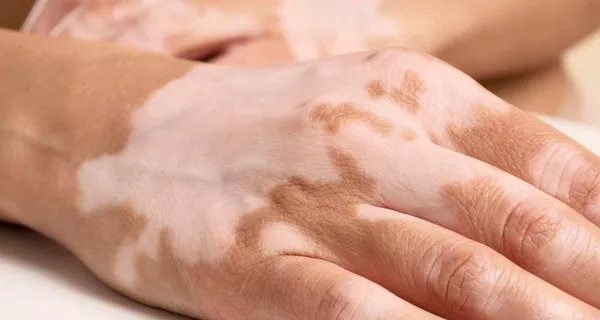Vitiligo is a skin condition characterized by the loss of pigment in certain areas of the skin, resulting in white patches. While the exact cause of vitiligo is not fully understood, there are several factors that may contribute to its onset later in life. This article explores the potential causes of vitiligo in adults and addresses current research and theories surrounding this condition.
Introduction to Vitiligo
Vitiligo affects approximately 1% of the world’s population, regardless of age, race, or gender. It can manifest at any age, but onset in adulthood is not uncommon. The condition occurs when melanocytes, the cells responsible for producing melanin (the pigment that gives skin its color), are destroyed or stop functioning. This results in depigmented patches on the skin, which can vary in size and location.
Genetic Predisposition
Genetics play a significant role in the development of vitiligo. Research indicates that individuals with a family history of autoimmune diseases or vitiligo itself are more likely to develop the condition. Specific genetic variations associated with immune system regulation and melanocyte function may contribute to the susceptibility to vitiligo later in life.
Autoimmune Factors
Many researchers believe that vitiligo is an autoimmune disorder, where the body’s immune system mistakenly attacks and destroys its own melanocytes. This autoimmune response can be triggered or exacerbated by various factors, including stressful life events, environmental factors, and infections. In adults, autoimmune mechanisms may become more pronounced or reactive, potentially leading to the development of vitiligo.
Oxidative Stress and Cellular Damage
Oxidative stress refers to an imbalance between free radicals (reactive molecules) and antioxidants in the body, leading to cellular damage. Some studies suggest that oxidative stress may play a role in the pathogenesis of vitiligo. In adults, prolonged exposure to environmental stressors, pollutants, and lifestyle factors such as smoking or poor diet may increase oxidative stress levels, potentially contributing to the onset or progression of vitiligo.
Neurogenic Factors
Recent research has explored the role of neurogenic factors in the development of vitiligo. Neurogenic theory proposes that neurological factors, including neurotransmitters and neuropeptides, may influence melanocyte function and survival. Changes in neurotransmitter levels or neuronal signaling pathways in adulthood could disrupt melanocyte function, leading to depigmentation in localized areas of the skin.
SEE ALSO: Why Does My Vitiligo Come and Go?
Environmental Triggers and Lifestyle Factors
Environmental factors can play a crucial role in triggering vitiligo later in life. Exposure to certain chemicals, industrial solvents, or even common substances like phenols or catechols found in fruits and vegetables may act as triggers for susceptible individuals. Additionally, lifestyle factors such as smoking, excessive sun exposure, and poor diet may exacerbate oxidative stress or immune dysfunction, accelerating the onset of vitiligo.
Hormonal Changes
Hormonal changes, such as those occurring during pregnancy or menopause, may also influence the onset or progression of vitiligo. Fluctuations in hormone levels can affect immune function and melanocyte activity. Women, in particular, may experience changes in their vitiligo symptoms during hormonal shifts, highlighting the complex interplay between hormonal factors and autoimmune responses in adulthood.
Psychological Factors
Psychological stress and emotional trauma have been linked to the exacerbation of autoimmune diseases, including vitiligo. Adults experiencing significant stress, anxiety, or depression may notice changes in their vitiligo lesions or new patches developing. Stress management techniques and psychological support can be beneficial in managing vitiligo symptoms and improving overall well-being.
Conclusion
In conclusion, the development of vitiligo later in life is influenced by a combination of genetic predisposition, autoimmune mechanisms, oxidative stress, neurogenic factors, environmental triggers, hormonal changes, and psychological factors. While the exact cause remains elusive, ongoing research continues to advance our understanding of this complex condition. Early diagnosis, comprehensive medical evaluation, and personalized treatment plans are crucial in managing vitiligo and improving quality of life for affected individuals.
This article provides a comprehensive overview of the potential causes of vitiligo in adults, highlighting the multifactorial nature of the condition and the importance of further research in elucidating its underlying mechanisms.
Related Topics:



























